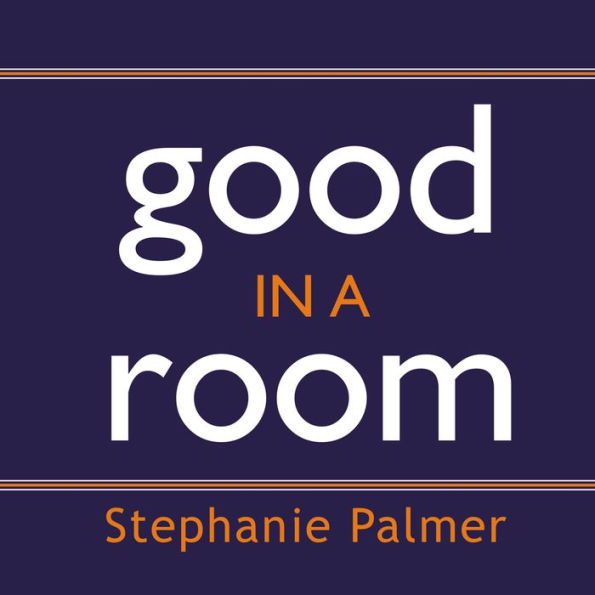Palmer (former director of creative affairs, MGM) applies her knowledge of the strategies and tactics used by film directors and writers for pitching ideas to help businesspeople generally become better sellers. The book proceeds chronologically, describing the process of making connections with people in your industry, and developing persuasive presentations about yourself and your project. Palmer concentrates evenly on social networks and communication skills, both formal and informal. Brief chapters focus on a concept or strategy, which makes it easy to navigate the topics that are of greatest interest to particular readers. Case studies and the author's personal experiences supplement his explanation of the principles with minimal use of outside sources. Those interested in careers in the creative arts will find this book especially helpful, but the approach also makes it relevant to those interested in professional and personal development generally. Recommended for all public libraries and some undergraduate library collections.
—Mark L. McCallon
Business consultant and former MGM director of creative affairs Stephanie Palmer reveals the techniques used by Hollywood's top writers, producers, and directors to get financing for their projects and explains how you can apply these techniques to be more successful in your own high-stakes meetings. Because, as Palmer has found, the strategies used to sell yourself and your ideas in Hollywood not only work in other businesses, they often work better.
Whether you are a manager or executive with an innovative proposal, a professional with a hot concept, a salesperson selling to a potential client or investor, or an entrepreneur with a business plan, Good in a Room shows you how to:
-Master the five stages of the face-to-face meeting
-Avoid the secret deal breakers of the first ninety seconds
-Be confident in high-pressure situations
-Present yourself better and more effectively than you ever have before
Whether you want to ask for a raise, grow your client list, launch a new business, or find financing for a creative project, you must not only present your ideas in a compelling way-you must also sell yourself. Good in a Room shows you how to construct a winning presentation and deliver the kind of performance that will get your project greenlighted, whatever industry you are in.
"1114684179"
Whether you are a manager or executive with an innovative proposal, a professional with a hot concept, a salesperson selling to a potential client or investor, or an entrepreneur with a business plan, Good in a Room shows you how to:
-Master the five stages of the face-to-face meeting
-Avoid the secret deal breakers of the first ninety seconds
-Be confident in high-pressure situations
-Present yourself better and more effectively than you ever have before
Whether you want to ask for a raise, grow your client list, launch a new business, or find financing for a creative project, you must not only present your ideas in a compelling way-you must also sell yourself. Good in a Room shows you how to construct a winning presentation and deliver the kind of performance that will get your project greenlighted, whatever industry you are in.
Good in a Room: How to Sell Yourself (and Your Ideas) and Win Over Any Audience
Business consultant and former MGM director of creative affairs Stephanie Palmer reveals the techniques used by Hollywood's top writers, producers, and directors to get financing for their projects and explains how you can apply these techniques to be more successful in your own high-stakes meetings. Because, as Palmer has found, the strategies used to sell yourself and your ideas in Hollywood not only work in other businesses, they often work better.
Whether you are a manager or executive with an innovative proposal, a professional with a hot concept, a salesperson selling to a potential client or investor, or an entrepreneur with a business plan, Good in a Room shows you how to:
-Master the five stages of the face-to-face meeting
-Avoid the secret deal breakers of the first ninety seconds
-Be confident in high-pressure situations
-Present yourself better and more effectively than you ever have before
Whether you want to ask for a raise, grow your client list, launch a new business, or find financing for a creative project, you must not only present your ideas in a compelling way-you must also sell yourself. Good in a Room shows you how to construct a winning presentation and deliver the kind of performance that will get your project greenlighted, whatever industry you are in.
Whether you are a manager or executive with an innovative proposal, a professional with a hot concept, a salesperson selling to a potential client or investor, or an entrepreneur with a business plan, Good in a Room shows you how to:
-Master the five stages of the face-to-face meeting
-Avoid the secret deal breakers of the first ninety seconds
-Be confident in high-pressure situations
-Present yourself better and more effectively than you ever have before
Whether you want to ask for a raise, grow your client list, launch a new business, or find financing for a creative project, you must not only present your ideas in a compelling way-you must also sell yourself. Good in a Room shows you how to construct a winning presentation and deliver the kind of performance that will get your project greenlighted, whatever industry you are in.
16.99
In Stock
5
1

Good in a Room: How to Sell Yourself (and Your Ideas) and Win Over Any Audience

Good in a Room: How to Sell Yourself (and Your Ideas) and Win Over Any Audience
FREE
with a B&N Audiobooks Subscription
Or Pay
$16.99
16.99
In Stock

Editorial Reviews
Product Details
| BN ID: | 2940171181383 |
|---|---|
| Publisher: | Tantor Audio |
| Publication date: | 04/28/2008 |
| Edition description: | Unabridged |
| Sales rank: | 956,633 |
Videos

From the B&N Reads Blog
